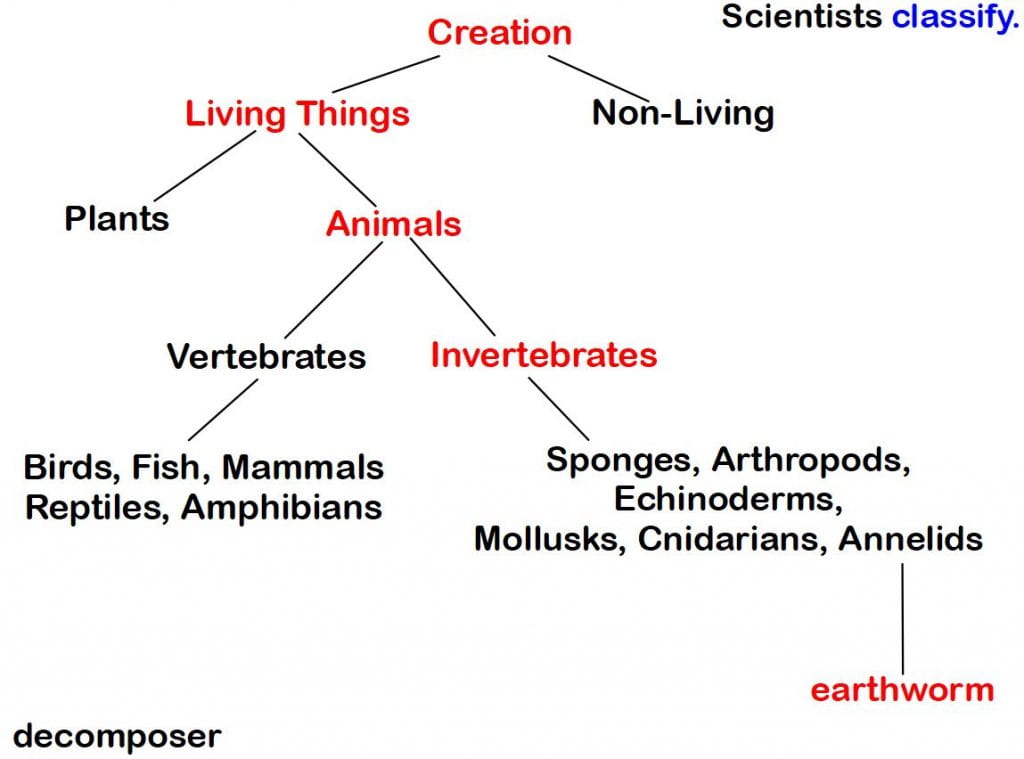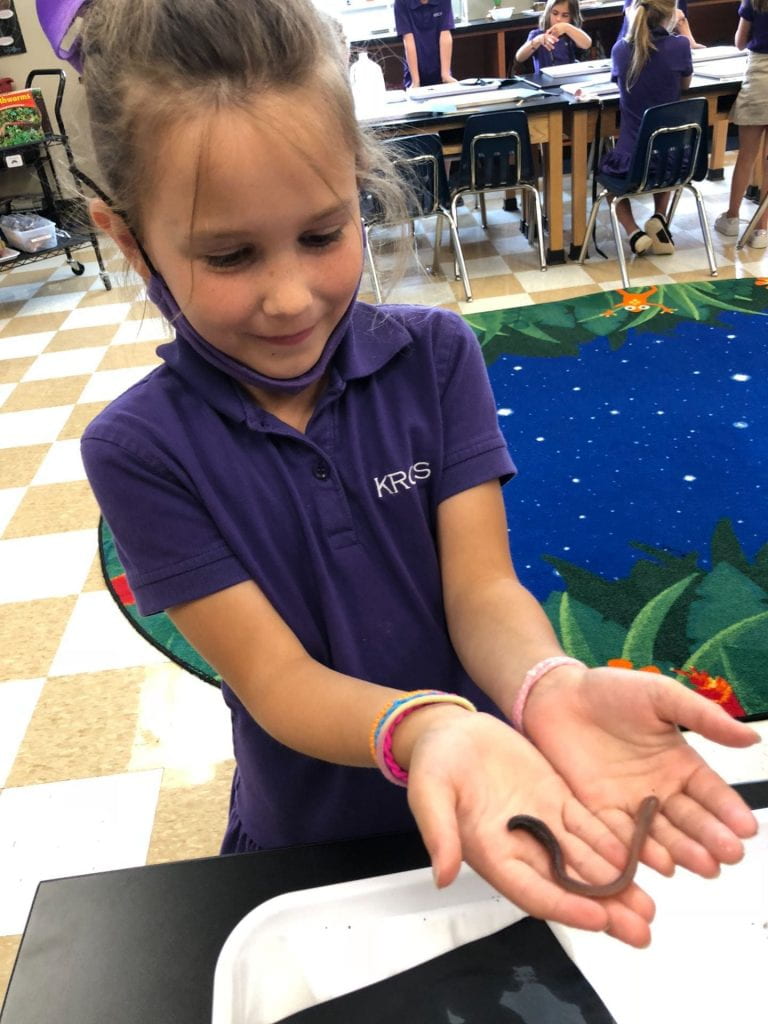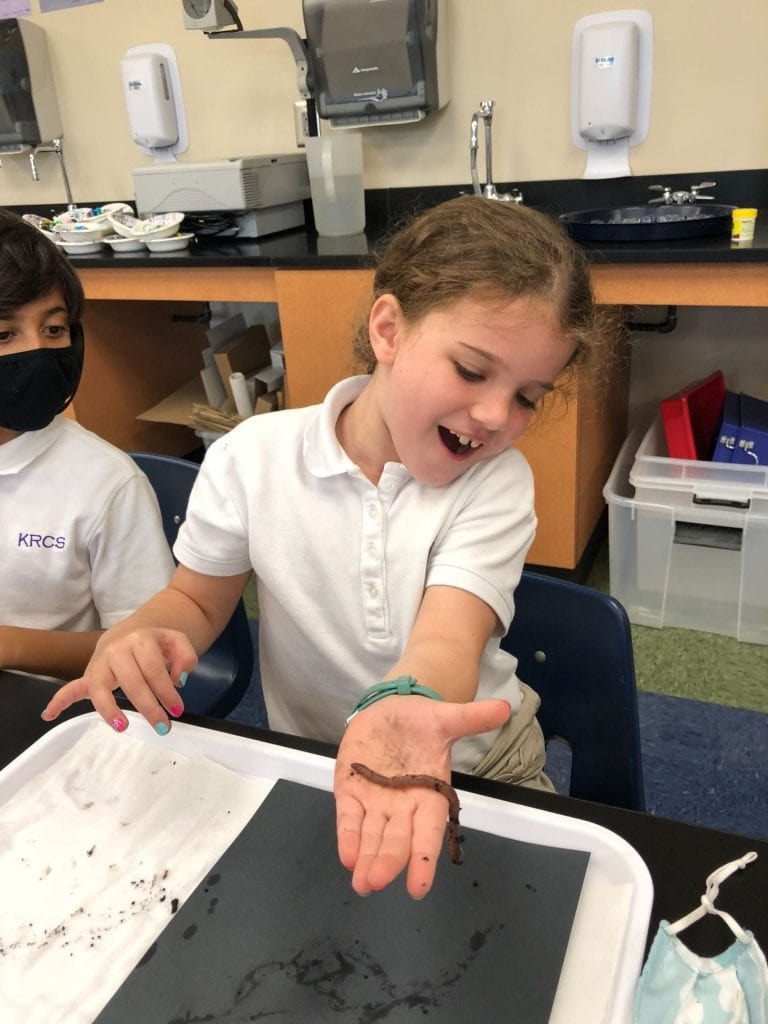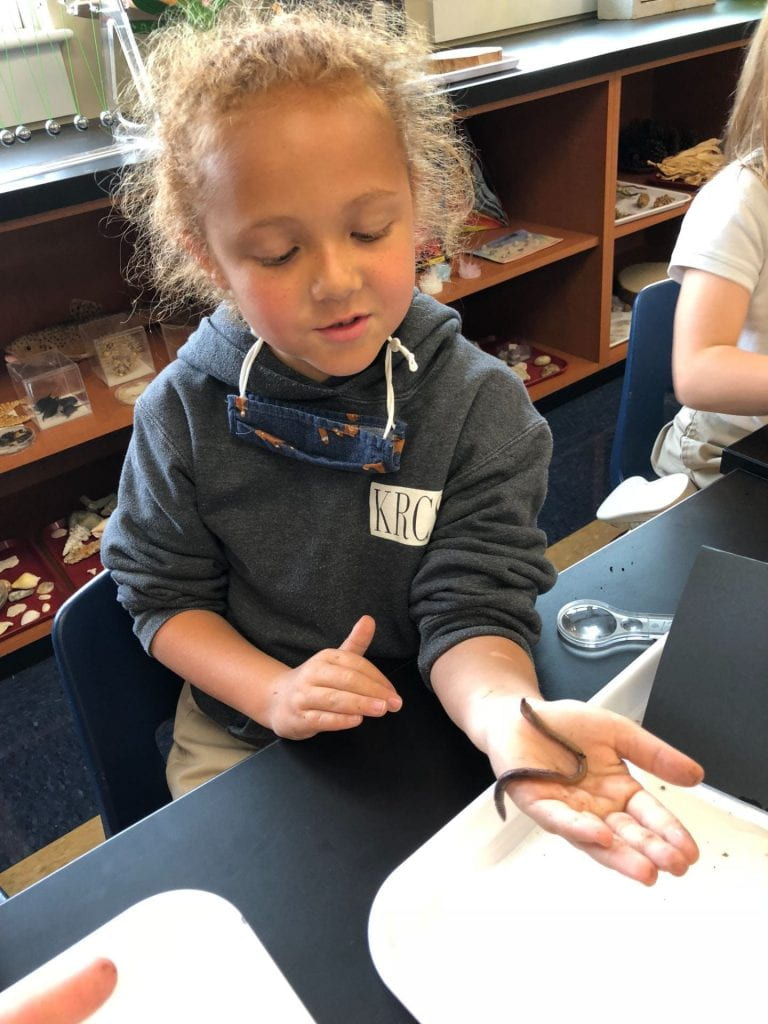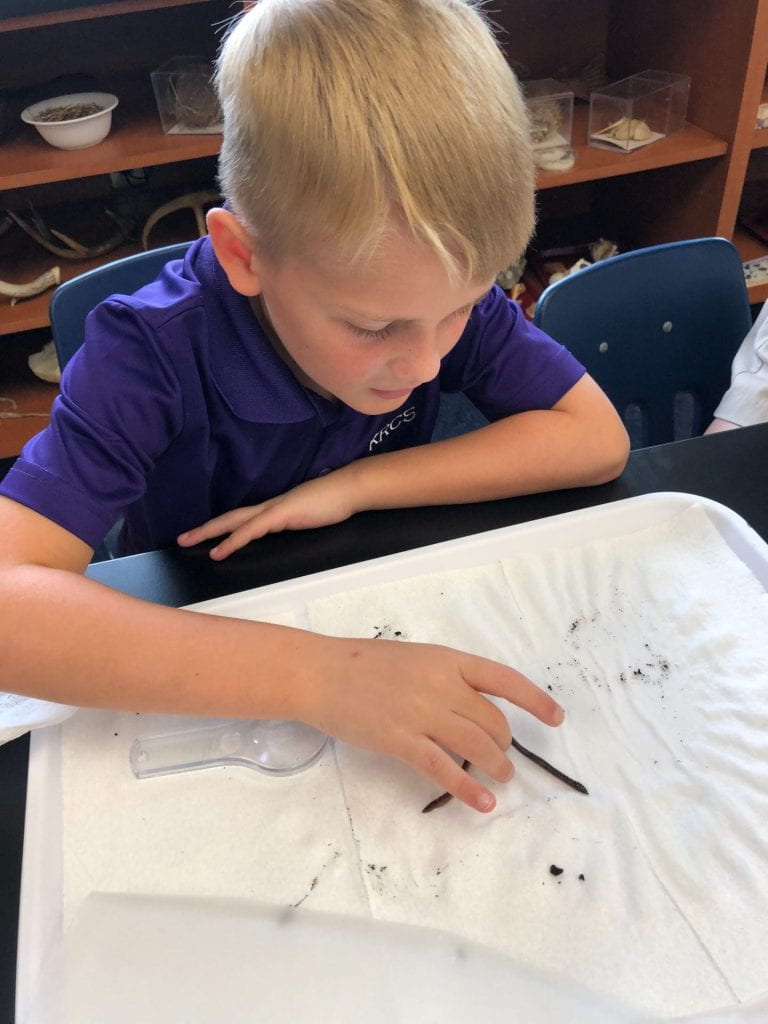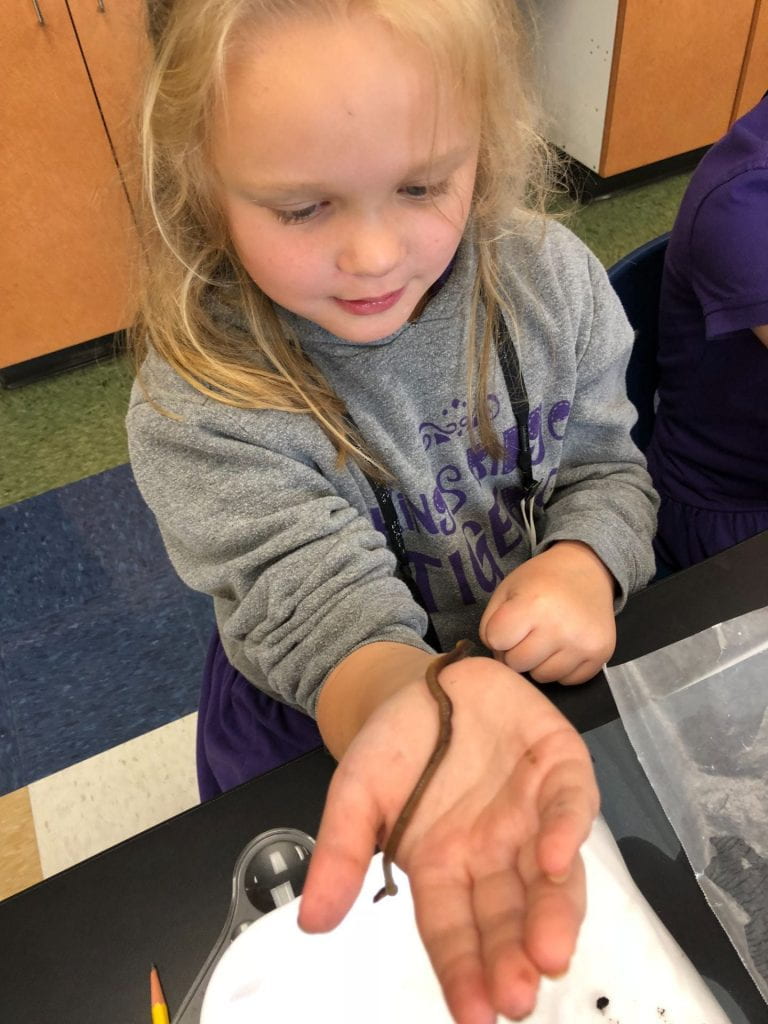May
6
Worms! Worms! Worms!
When you are studying invertebrates, you must include annelids! After learning about a worm’s life cycle, body parts, and habitat, second grade biologists investigated earthworms. We used hand lenses to look for the five hearts, setea (small bristles) that help the worm move, and clittelum, a band near the front of the worm where the eggs become cocoons. Worms don’t have eyes, but are sensitive to light and must stay moist to absorb oxygen. Because they are decomposers, they have an important role in the ecosystem. With two sets of muscles, the worms slid quickly across our trays. I demonstrated this movement with a slinky.
